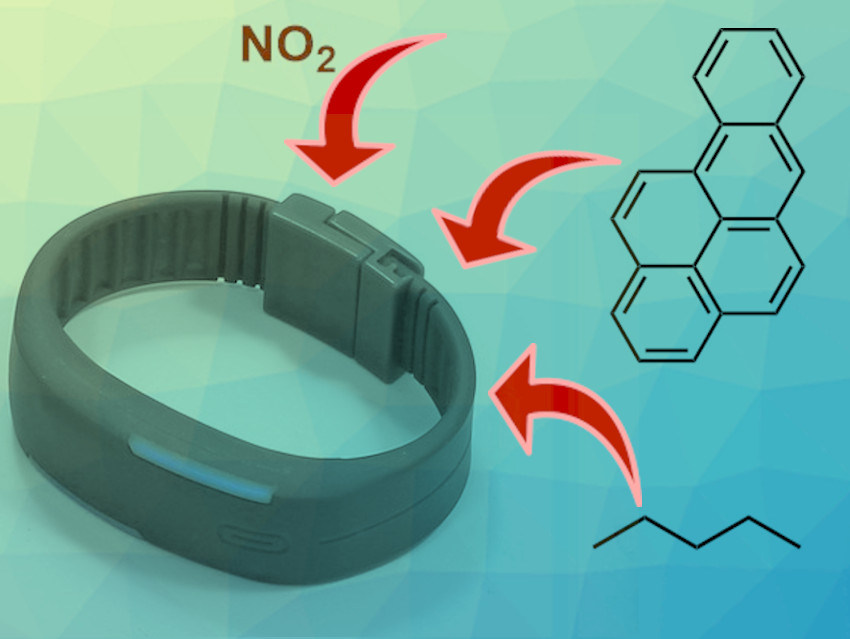Air pollution by volatile organic compounds (VOCs), polycyclic aromatic hydrocarbons (PAHs), and irritating gases such as nitrogen dioxide (NO2) poses serious health risks. Quantifying exposure to these pollutants has often been difficult. Expensive and heavy sampling equipment was needed to collect material, which later had to be subjected to time-consuming evaluation procedures. These conditions make personal exposure evaluation difficult. Passive samplers using polymeric sorbents such as polydimethylsiloyxane (PDMS) have been used for stationary tests. Similar sorbent membranes have also been included in wearable devices for measuring exposure.
Krystal J. Godri Pollitt, Yale University, New Haven, CT, USA, and colleagues have developed a sampler wristband consisting of a polytetrafluorethylene (PTFE) chamber that contains two sampling devices: a PDMS sorbent bar to absorb organic pollutants and a commercially available NO2 detection pad. Due to the PTFE coating of the chamber, the sampling units do not come into contact with the wearer’s skin. This avoids interference by the substances contained in skin-care products.
The PDMS sorbent bars were calibrated using known concentrations of VOCs and PAHs. Afterward, field tests in an industrial kitchen and at stationary sampling points as well as tests for the long-time stability of absorbed compounds were carried out. After the material had proven reliable in these tests, adult participants tested the wristband by wearing it for 24 hours. In addition, school-aged children wore the wristband. Afterwards, the two sampling devices were removed from the wristbands and analyzed.
The team found good reproducibility overall. However, low-molecular PAHs were not retained well for periods longer than 24 hours. The results indicate that the wristband is a useful tool to evaluate exposure to organic pollutants and NO2 over short periods. The researchers could show that the exposure of school-aged children differs depending on, e.g., the type of stove in their home and the mode of travel to school. Further work is necessary to improve the long-term absorption of low-molecular PAHs and to test the PDMS-sorbent bar’s performance over extended periods of time and at different temperatures.
- The Fresh Air Wristband: A Wearable Air Pollutant Sampler,
Elizabeth Z. Lin, Sarah Esenther, Massimiliano Mascelloni, Fareeha Irfan, Krystal J. Godri Pollitt,
Environ. Sci. Technol. Lett. 2020.
https://doi.org/10.1021/acs.estlett.9b00800




